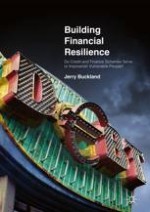2018 | OriginalPaper | Buchkapitel
3. New Areas of Commercial Banking Directed at Vulnerable People: Payday Lending and Mobile Banking
verfasst von : Jerry Buckland
Erschienen in: Building Financial Resilience
Aktivieren Sie unsere intelligente Suche, um passende Fachinhalte oder Patente zu finden.
Wählen Sie Textabschnitte aus um mit Künstlicher Intelligenz passenden Patente zu finden. powered by
Markieren Sie Textabschnitte, um KI-gestützt weitere passende Inhalte zu finden. powered by
